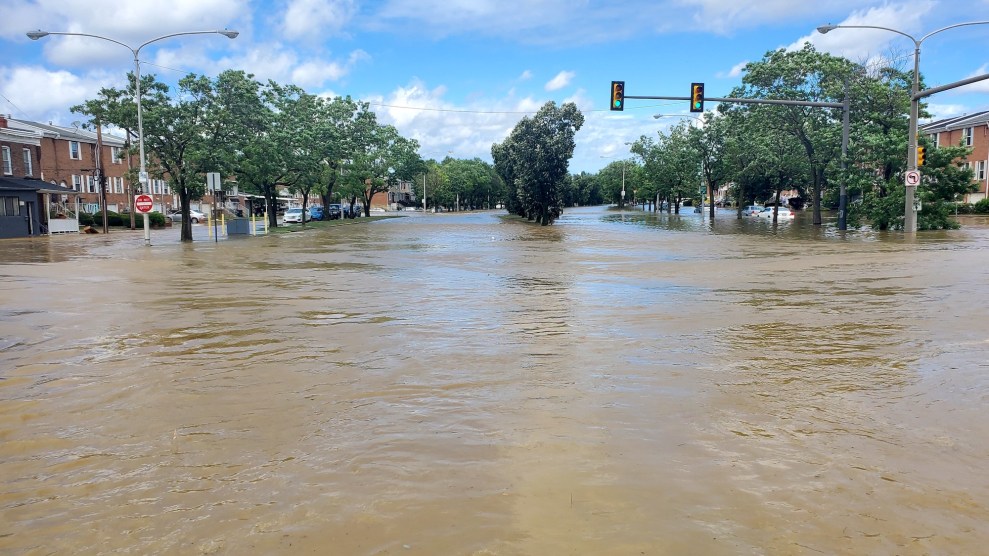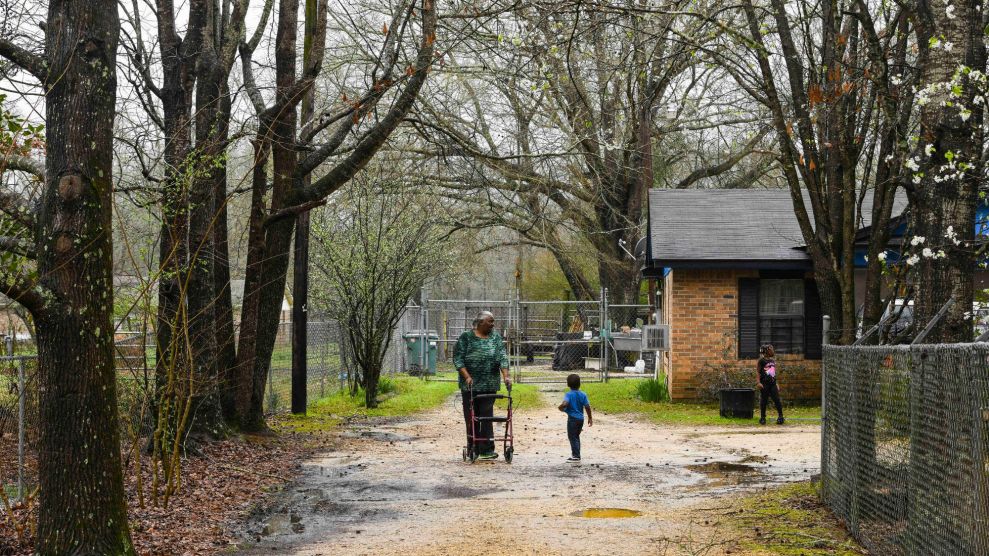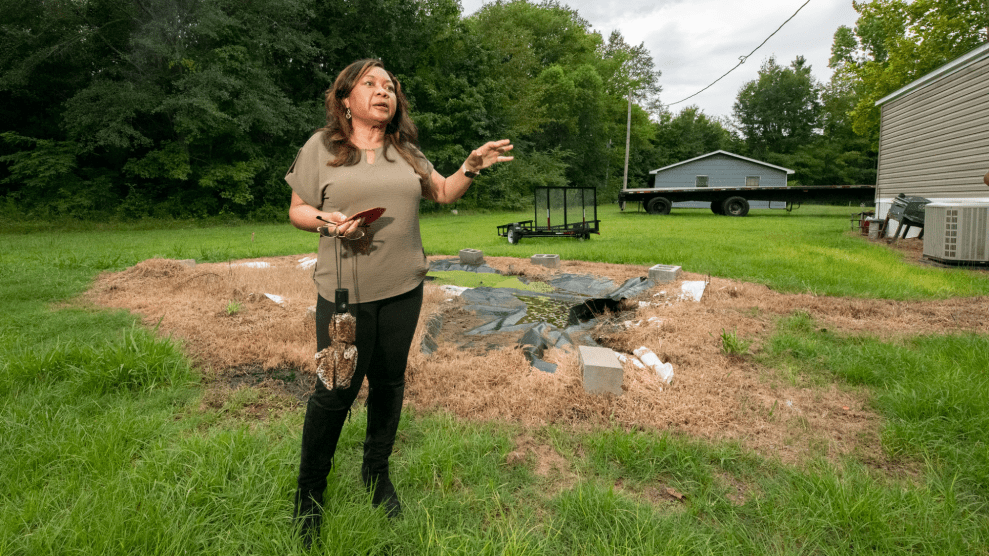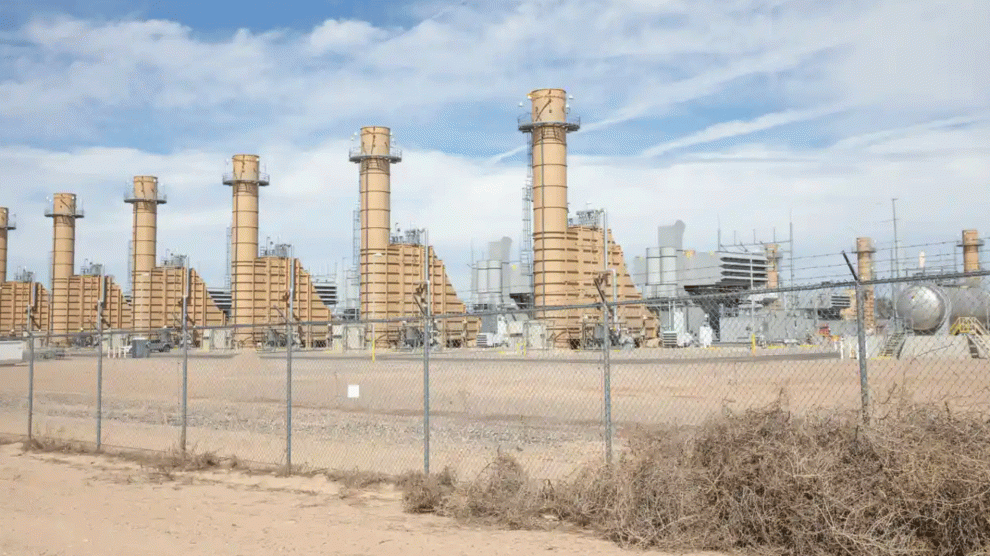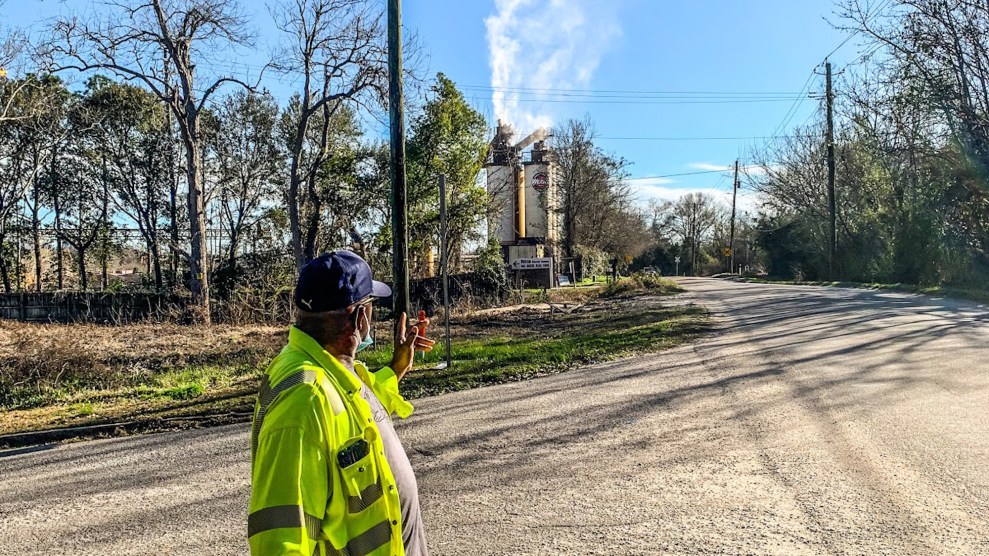
Walter Moorer observes fumes emitted from the Hosea Weaver asphalt plant near Chin Street in the historic Black community of Africatown.Patrick Darrington/Inside Climate News
This story was originally published by Inside Climate News and is reproduced here as part of the Climate Desk collaboration.
Walter Moorer likes to say he lives at 411 “Death Row Street.” At least that is what he compares his living conditions to as he is bombarded with the stench, pollution, noise, and dust that emanates from an asphalt plant owned by Hosea Weaver and Sons Inc.
“I changed it to Death Row because I’d be in the house and that odor comes from Hosea Weaver,” Moorer said at a hearing last month before the Alabama Department of Environmental Management (ADEM). “It’s like I’m in a gas chamber. So I been on death row 20 something years.”
Moorer’s testimony came during part of the hearing set aside for public comment on Hosea Weaver’s application for a new or revised Synthetic Minor Operating Air Permit. The input from Moorer and others who live next door to the company could be summed up in three words: deny the permit.
It had been a long road of opposition for Moorer and his neighbors, who can still remember life before the asphalt plant, and the Planning Commission meeting 25 years ago when their concerns were first ignored. Would their testimony, and written comments, to the state’s environmental regulators produce a different result this time?
Moorer actually lives on Chin Street in the historic Black community of Africatown, which was founded by former slaves brought to America on the Clotilda, the last known slave ship to arrive in the country. Intertwined in Africatown’s history is the constant billow of industrial pollution that has plagued residents there for years.
Moorer, 66, grew up on Chin Street and reminisces about how life used to be before Hosea Weaver constructed the asphalt plant just yards away from his home 20 years ago. Moorer said he once was able to go outside and hear children playing, smell food barbecuing and feel a vibrant community.
Now the sound of young children playing and smell of food grilling has been replaced with machinery and the noxious fumes of asphalt cooking.
Michael Weaver, Hosea Weaver’s president, did not respond to a request for comment.
Moorer and other residents have complained for years about Hosea Weaver to local officials, yet the company has continued operating. The experience has taken a toll on Moorer, who said the company has destroyed his life. The only relief from the facility’s pollutants, he said, are when it rains or if the company gives workers a day off.
“My life, my nerves,” Moorer said, “all this is about is Hosea Weaver. I think about them all the time because they done destroyed my life.”
Now, Moorer just hopes the new permit will be denied by ADEM and some peace can be restored to his life. But if the permit is denied it is unclear whether the facility will have to cease operating, or could re-apply.
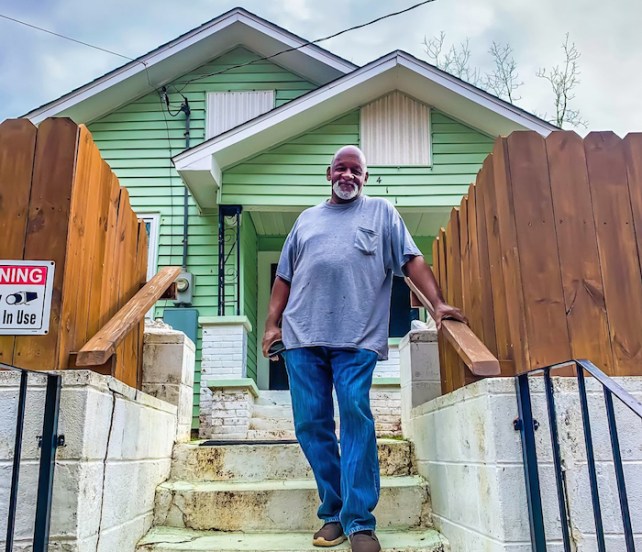
Moorer outside his home on Chin Street in Mobile, Alabama.
Patrick Darrington/Inside Climate News
In November 2021, after residents filed complaints with ADEM about the facility, regulators conducted a particulate matter air quality test in June 2022. It found that Hosea Weaver was emitting the maximum amount of particulate matter allowable under their air permit, and ADEM issued a warning. The company responded to ADEM two months later promising to conduct quarterly tests to detect any leaks. Subsequently, ADEM conducted a test in December 2022 that revealed the facility had not fixed the issue and was emitting particulate matter above the allowable limit.
The limit for particulate matter emission is 0.04 grains per dry standard cubic foot. The asphalt company was found to be emitting an average of 0.067 gr/dscf.
Particulate matter is a pollutant created from a mixture of solid particles and liquid droplets found in the air, according to the US Environmental Protection Agency. Exposure to particulate matter can cause a multitude of health complications, according to studies, including lung cancer, aggravated asthma, increased respiratory issues and more. The facility also exposes residents to several “criteria” pollutants alongside particulate matter, as defined by the EPA, including sulfur dioxide, volatile organic compounds, ozone pollution, lead, and nitrogen monoxide.
Hosea Weaver discovered that the reason for the excessive emissions was a failed mechanism designed to capture pollution. The facility was issued a consent order by ADEM for violating the emissions limit and fined $24,000.
The new revisions to the permit would place further limitations on the facility’s hours of operations and on the types of fuel oil it is allowed to burn. ADEM contends these revisions will ensure that Hosea Weaver remains in compliance with the new permit. But an environmental organization, the Mobile Environmental Justice Action Coalition (MEJAC), argues that the new permit requirements demonstrate that the facility has been operating without the correct permit the entire time.
Moorer and other nearby residents are not satisfied with these revisions and want Hosea Weaver out of their neighborhood. Public comment from several other environmental organizations cite multiple reasons why the proposed permit is not sufficient and should be denied.
While the majority of public comments submitted to ADEM asked the agency to deny the permit, some people still support the company—but none who live on Chin Street.
As part of the public input process, ADEM held the hearing and also allowed written comments to be submitted. Yuvonne Brazier offered written comments and spoke during the hearing.
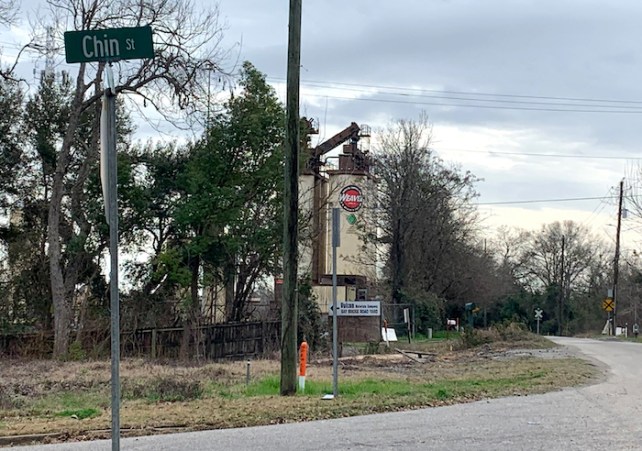
The Hosea Weaver asphalt plant is yards away from Chin Street.
Patrick Darrington/Inside Climate News
“When I tried to tell ADEM about all the cancer and sickness I have seen over the last 20 years, I am told to go to the health department,” Brazier wrote. “The health department has told me that they have nothing to do with the environment. Thank God there are no more fish in 3 Mile Creek where the whole street used to fish and share with the neighbors. My mother, who never smoked, died of lung cancer. I tried to get her to leave, but she loved our home and her garden in the backyard. She bragged about her fresh vegetables. When her cancer got so bad, she had to leave and come stay with me. Then my niece tried to live there, until her son almost died of asthma. He could not breathe.”
An environmental justice report by the EPA called an EJScreen was conducted on Africatown, mapping different socioeconomic and environmental indicators. The test confirmed that Africatown was an environmental justice community because residents face the highest air toxics cancer risk in Alabama (99th percentile) and in the United States (95-100th percentile).
Also, a countrywide 2019 EPA study found that Alabama emitted the fifth-most toxic substances into the air and Mobile County ranked first in the state in overall releases.
All told, over 65 pages of written comment were submitted by a collection of environmental organizations, including MEJAC, Mobile Alabama NAACP Environmental and Climate Justice Committee, Greater-Birmingham Alliance to Stop Air Pollution (GASP), the Southern Environmental Law Center (SELC), and Clean Healthy Educated Safe and Sustainable Africatown (CHESS).
Throughout the document, the organizations presented numerous reasons why ADEM should deny the permit, chief among them that Hosea Weaver needs to be designated as a so-called “major source” emitter under Title V of the Clean Air Act. They argue that, based on Hosea Weaver’s emissions history, the asphalt plant clearly releases excess tons of pollution that go above the threshold of a major source emitter.
The environmental organizations also argue that ADEM is not fulfilling its role to protect the civil rights of a disproportionately harmed minority community, as described under the Civil Rights Act of 1964.
“ADEM—as a recipient of federal funds for enforcement of the air permitting and other programs delegated to it by the EPA—must ensure it fulfills its legal duty to protect civil rights as required by Title VI of the Civil Rights Act of 1964,” the document says. “Such consideration is required under Title VI because emissions from the Source result in an emissions impact to a community that already bears disproportionate socioeconomic harms.”
For Beverly Cooper, who spoke against the new permit, the ADEM hearing brought back memories of another public meeting in 1999: She was, at the time, a member of the Mobile Planning Commission, and Hosea Weaver had come before the panel, belatedly seeking a construction permit for a project it had almost completed.
“I voted against this because it was clear that it would have a negative impact on the local community, and it has,” Cooper said. “Since it went into operation, it has had a devastating impact on the local community, the residents, their health, and local businesses.”
Cooper also said that the facility was essentially fully constructed by the time Hosea Weaver even came before the planning commission to request its approval.
According to a Mobile Press Register article from 1999, Hosea Weaver constructed nearly 75 percent of the facility next to Chin Street prior to obtaining the necessary construction permit from the city of Mobile. The city administered multiple stop-work orders for Hosea Weaver to halt construction on the facility after finding out but the company continued building anyway. The firm’s former president, Paul Weaver, said at the time that he did not know it needed a permit to build.
Despite the plant being constructed without city permits, the Mobile Planning Commission voted 4-2 to give Hosea Weaver preliminary approval. One of the members, James Laier, recused himself because he worked with Hosea Weaver on the project.
According to the Press Register, 40 Africatown and Chin Street residents protested the facility being built during the meeting. As part of the construction approval, the commission required Hosea Weaver to build an 8-foot privacy fence and two strips of 16-foot-tall trees to serve as a buffer for nearby residents. These requirements were never fulfilled.
Inside Climate News spoke to several residents who detailed how Hosea Weaver has negatively impacted their community, although they did not submit public comments.
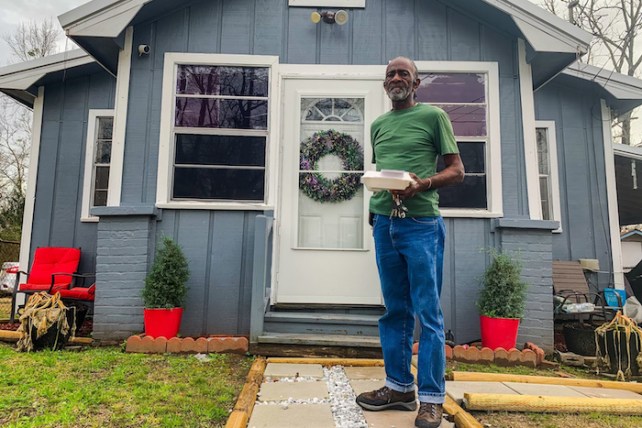
Arthur Ruggs’ backyard has turned swampy due to an embankment created by the asphalt plant.
Patrick Darrington/Inside Climate News
Arthur Ruggs, who did not submit written testimony with ADEM objecting to Hosea Weaver’s new permit, said in an interview that his backyard was swampy due to an embankment created by the asphalt plant. Ruggs said he could not even mow his lawn, explaining how his lawnmower recently got stuck in the muddy earth.
Ruggs is glad his children were grown by the time Hosea Weaver moved in and avoided the company’s pollution and environmental impact.“The only thing about it now is ain’t no small kids around here,” he said.
Jemal Walker said that the noise produced by the plant often kept him from getting any sleep at night. Walker was once incarcerated and said he had “more peace” in prison than he does now.
“I’d rather be in prison than to be sitting here listening to this noise,” Walker said. “I got more peace in prison than I do right here.”
There are some within the Africatown community and outside who support Hosea Weaver. Cleon Jones, a member of the Africatown Community Development Corporation, argued during the public hearing that Hosea Weaver and “business” were needed to help revitalize Africatown, even though residents say the company does not employ anyone from the community. Charles Williams, also with ACDC, said he empathized with Chin Street residents but believed they needed to discuss solutions because “industry is going nowhere.”
“My heart goes out to the people that live next to the plant,” Williams said. “I live over here. So I don’t have to hear the noises. I don’t have to see the pollution. I don’t have to walk in your shoes, but I can empathize with you. But also there are people who work at that plant who have got to feed their families. And we’ve got to try to find a solution.”
ACDC is connected to a nonprofit organization that works to protect the interest of businesses in the port of Mobile from environmental activists, called Keep Mobile Growing (KMG). Its website says it is a “non-profit alliance of Mobile Businesses and industries supporting the Alabama Port Authority, related port commerce and the region’s energy markets.”
The organization was founded in 2014 explicitly to provide a voice against environmental activists, according to its website. “Radical, national environmental organizations remain active locally and are emboldened by increasing attention to the Mobile area,” a page on the website says. “Their agendas often conflict with the traditional, safe operations of KMG members. KMG exists to provide a voice of advocacy against any threats posed by these groups.”
The Mobile Environmental Justice Action Coalition was founded just a year prior, in 2013, advocating on behalf of citizens who live near the port and all its businesses.
Keep Mobile Growing’s membership list on their website features Hosea Weaver. The organization touts how, through its collaboration with the Africatown Community Development Corporation, it established the Africatown Business and Community Panel (ABCP) in 2016. In IRS filings, this relationship is referenced consistently. Keep Mobile Growing gave $1,000 to Jones’ organization, the Cleon Jones Last Out Community Foundation, according to 2021 filings.
During her public comments at the recent ADEM meeting, Brazier, in describing all the cancer in her family, mentioned that a city council member told her they were powerless to help because businesses in the port generated substantial revenue.
“Some guys came down from Washington, they said they’ve never seen a plant that close to a community,” Brazier said. “And I just don’t understand that. We’ve been to city council after city council meeting. We were there a couple years ago. And the city council member said we get $30 billion from the state dock and all that’s connected, so there’s nothing we can do about it.”
Shirley Ford, another Chin Street resident, has no faith in ADEM and remembers what life was like prior to Hosea Weaver moving in.
“I was born here and raised here,” Ford said. “I remember when the air was better. I remember when it smelled better. Nine times out of ten ADEM’s gonna give the permit to Weaver anyway, cause the plant isn’t in their neighborhood.”
On March 18, ADEM announced its decision regarding the air permit, and it was just as Ford had assumed: ADEM granted the permit despite the overwhelming pleas from Chin Street residents asking for a denial.
In a response to the public comments received, ADEM separated the submissions into two sections. One section was for comments concerning the proposed permit, the agency said in its response, while the other section was for comments not relevant to the proposed permit action. It categorized all of the comments asking for the permit to be denied—those made primarily by Chin Street residents—as irrelevant to the permitting action.
The comments deemed relevant to the proposed permit action were predominantly those submitted by MEJAC and other environmental organizations. ADEM responded to these comments by explaining how Hosea Weaver complied with applicable regulations or how the comments did not necessitate any changes to the proposed permit.
“The applicant [Hosea Weaver] has submitted to the Department a request for additional restrictions and recordkeeping requirements for the existing Synthetic Minor Operating Permit,” ADEM said in response to comments to deny the permit. “The application indicates, to the satisfaction of the Department, that the proposed changes to the permit can comply with the technical and administrative requirements applicable to the proposed operation of the facility. Once an applicant satisfies all legal requirements for obtaining a permit, the Department cannot arbitrarily deny the issuance of the requested permit. In addition, the Department has no jurisdiction over the zoning and siting of permitted facilities. Such issues should be presented to the appropriate local zoning agency/department.”
The comments that were relevant to the proposed permit action were predominantly the arguments submitted by the Mobile Environmental Justice Action Coalition and other environmental organizations. ADEM responded to these comments by explaining how Hosea Weaver complied with applicable regulations, and how the comments did not necessitate any changes to the proposed permit.
Walter Moorer, like his neighbor on Chin Street, Shirley Ford, was not surprised by the decision. “I knew it was gonna happen because nobody cares about our lives,” he said.
Moorer said he did not want to bring up race as a factor, but he believed that ADEM was so willing to disregard the community’s concerns because they are Black and the owners of the asphalt plant are white.
Surrounded by industry in the “chemical corridor,” Ford said she wants people to know the uncomfortable conditions she and other residents live under. “It feels like we don’t exist,” she said.
“I want them to know about the smell, how terrible it is,” Ford said. “The noise. The dust. And how they just ignore us like we don’t exist. And don’t care. They didn’t even put the eight-foot fence up. They didn’t even put nothing to try to buffer the noise nor the dust or anything. It’s like we don’t count. We don’t exist.”
